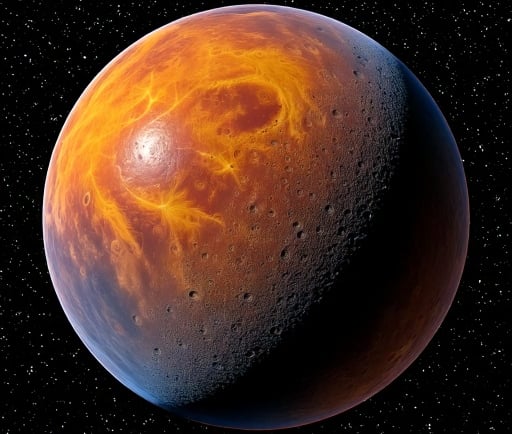Iota Draconis B: The Eccentric Orbit and Its Cosmic Significance


Introduction to Iota Draconis B
Iota Draconis B, a fascinating celestial body located within the Draco constellation, has piqued the interest of astronomers and space enthusiasts alike. This exoplanet's extraordinary characteristics, particularly its eccentric orbit, offer a unique perspective on planetary systems beyond our own. The study of Iota Draconis B not only aids in grasping the complexities of exoplanetary systems but also contributes to our broader understanding of the universe.
Orbital Characteristics and Mass
The orbit of Iota Draconis B is considered eccentric, which means that it has a non-circular path around its host star. This peculiar orbit has been measured using the radial velocity (RV) method, allowing scientists to calculate its distance from Earth, which is approximately 31.5 parsecs. For context, this distance translates to about 102 light-years away, making Iota Draconis B one of the more accessible exoplanets for study.
In terms of mass, Iota Draconis B is estimated to possess a mass of 8.82 Jupiter masses. This substantial mass places the exoplanet in the category of gas giants. Such massive planets often exhibit unique atmospheric conditions and gravitational influences that can drastically vary compared to smaller terrestrial planets.
Significance of Eccentric Orbits
The eccentric nature of Iota Draconis B's orbit presents compelling implications for the study of planetary dynamics. An eccentric orbit can result in varying distances from the host star, leading to fluctuating temperatures and potentially impacting the atmospheric conditions of the planet. This fluctuation can encourage diverse weather patterns and contribute to the analysis of potential habitability, even in gas giants.
Moreover, the study of eccentric orbits aids in understanding the gravitational interactions that occur within a planetary system. In the case of Iota Draconis B, its unique trajectory could suggest complexities in the formation and evolution processes of exoplanets. By examining such instances, astronomers can better comprehend how planetary systems develop and operate, shedding light on the dynamic nature of our galaxy.
Conclusion
Iota Draconis B stands out as a remarkable subject of study in contemporary astronomy, particularly due to its eccentric orbit. With its significant distance of 31.5 parsecs and a mass of 8.82 Jupiter masses, this exoplanet offers valuable insights into the workings of planetary systems. As research continues to uncover more about Iota Draconis B and other exoplanets in the cosmos, our understanding of the universe and our place within it expands, paving the way for future discoveries.
